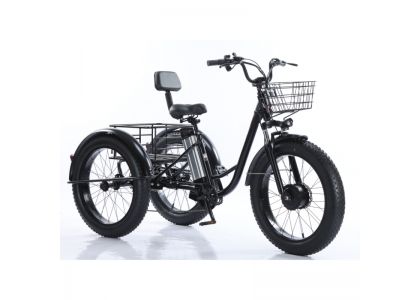
Electric snow tricycles, what are their uses in Europe?
Electric three-wheelers designed specifically for snow or cold-weather conditions, often referred to as electric snow trikes, have a more specialized role in European regions with harsh winters and snowy landscapes. Here are some of their main uses:
1. Winter Transportation
In snowy regions, these vehicles can be used for personal transportation. They are a more sustainable and practical alternative to cars or motorcycles, especially in small towns or areas with limited access to public transportation. Electric snow three-wheelers can navigate through snow and ice with ease, offering a safer option compared to two-wheelers or traditional vehicles.
2. Delivery Services
Electric snow trikes are being employed by delivery services for last-mile delivery in areas where snow and icy conditions might make conventional delivery vehicles less effective. They can deliver parcels, groceries, or even food in cities with snowy weather conditions, providing a quieter and more eco-friendly option compared to motorized trucks.
3. Tourism
In popular European winter tourist destinations (e.g., Alps, Scandinavia, or the Pyrenees), electric snow trikes are often used for eco-friendly tours. They offer a unique and immersive experience for tourists who want to explore snowy landscapes in a low-emission, quiet vehicle.
4. Leisure and Recreation
In some areas, these vehicles are also used for recreational purposes, such as snow trails or for off-road adventures in snow-covered areas. They provide an enjoyable way for individuals or small groups to explore scenic winter landscapes, combining the thrill of riding with the benefits of an electric vehicle.
5. Municipal Services (Snow Clearing and Maintenance)
Some municipalities in snowy European regions use electric three-wheelers for snow clearing and maintenance. These vehicles are equipped with snowplows or salt spreaders and can be used for clearing smaller streets, sidewalks, or pathways in urban areas where larger snowplows cannot access.
6. Agriculture and Rural Transportation
In rural, snow-prone areas, electric snow three-wheelers are used for agricultural work. They can help farmers move supplies, feed, or equipment across snow-covered fields or between farm buildings during the winter months. Their compact size makes them ideal for traversing narrow, snowy paths that larger vehicles cannot manage.
7. Emergency Services
Some regions use electric snow trikes for emergency services, such as rescuing people in remote, snowbound areas. Their ability to quickly maneuver through snow makes them a good option for first responders needing to reach hard-to-access locations in emergencies like avalanches, floods, or heavy snowstorms.
8. Eco-friendly Commuting
In European cities like Stockholm, Oslo, or Helsinki, where sustainability is prioritized, electric snow trikes can also be used for commuting in winter. Their energy-efficient and zero-emission nature makes them an ideal solution for reducing pollution in cities during colder months.
The key advantages of electric snow three-wheelers are their low environmental impact, ability to navigate challenging snowy terrain, and cost-effectiveness in areas where winter conditions make traditional transportation difficult. They align well with the broader European trend towards sustainable, green solutions for urban mobility, especially in regions that experience long, harsh winters.